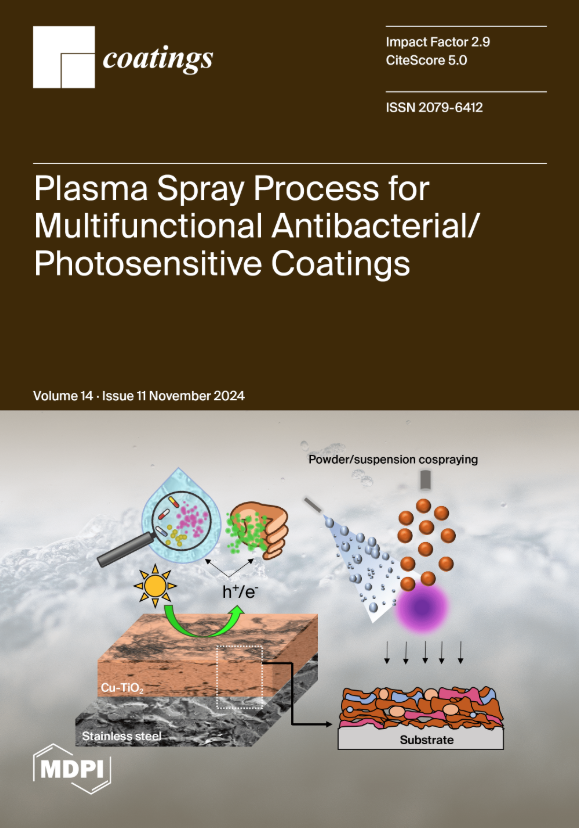通过气体动力冷喷法在耐火材料表面镀上细小的二氧化钛颗粒
IF 2.8
3区 材料科学
Q2 MATERIALS SCIENCE, COATINGS & FILMS
引用次数: 0
摘要
耐火材料被广泛应用于世界各地的加工设备中。然而,气态和液态加工产品会渗透到耐火材料的表层和内部深处,从而破坏昂贵的耐火材料结构,而且维修起来也很复杂。为了应对这一挑战,有必要为耐火材料开发保护涂层,以限制工作介质的渗透,延长耐火材料的使用寿命。在这项研究中,我们探讨了如何应用气体动力冷喷涂(CGDS)技术,利用细小的二氧化钛(TiO2)颗粒在耐火材料上形成涂层。这些颗粒在氮气流中加速,通过拉瓦尔喷嘴,然后喷射到耐火黏土表面。通过实验和数值模拟,研究了颗粒在多孔表面沉积和形成层的机理。确定了典型耐火材料孔隙的几何形状,然后将其纳入计算流体动力学(CFD)模拟,以模拟多孔基底的冷喷涂过程。结果确定了颗粒大小对其进入孔隙的速度和角度的影响。实验结果证明了孔隙的有效闭合以及耐火材料表面颗粒层的形成。此外,耐火材料样品的纳米压痕测试还展示了检查多孔材料涂层厚度的能力。本文章由计算机程序翻译,如有差异,请以英文原文为准。
Coating of Refractory Surfaces with Fine TiO2 Particles via Gas-Dynamic Cold Spraying
Refractory materials are used worldwide in process equipment. However, gaseous and liquid process products penetrate the surface layer and deep into the volume of refractories, destroying rather expensive constructions that are complicated to repair. To address this challenge, there is a need to develop protective coatings for refractory materials that can limit the penetration of working media and extend their operational lifespan. In this work, the application of gas-dynamic cold spraying (CGDS) to produce a coating on the refractory materials using fine titanium dioxide (TiO2) particles is explored. These particles are accelerated within a nitrogen flow, passing through a Laval nozzle, and then sprayed onto a fireclay surface. The mechanisms of particle deposition and layer formation on porous surfaces through experiments and numerical simulations were investigated. The geometry of a typical refractory pore was determined, which was then incorporated into computational fluid dynamics (CFD) simulations to model the cold spraying process of porous substrates. As a result, the influence of the particle size on its velocity and angle of penetration into pores was established. Experimental findings demonstrate the effective closure of pores and the formation of a particle layer on the refractory surface. Furthermore, the nanoindentation tests for the refractory samples showcase capabilities for checking coating thickness for porous materials.
求助全文
通过发布文献求助,成功后即可免费获取论文全文。
去求助
来源期刊

Coatings
Materials Science-Surfaces, Coatings and Films
CiteScore
5.00
自引率
11.80%
发文量
1657
审稿时长
1.4 months
期刊介绍:
Coatings is an international, peer-reviewed open access journal of coatings and surface engineering. It publishes reviews, research articles, communications and technical notes. Our aim is to encourage scientists to publish their experimental and theoretical results in as much detail as possible. There is no restriction on the length of the papers. Full experimental and/or methodical details must be provided. There are, in addition, unique features of this journal:
* manuscripts regarding research proposals and research ideas will be particularly welcomed
* electronic files or software regarding the full details of the calculation and experimental procedure - if unable to be published in a normal way - can be deposited as supplementary material
 求助内容:
求助内容: 应助结果提醒方式:
应助结果提醒方式:


